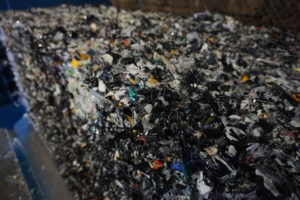Zero Waste is a term used by many environmentalists to describe the perfect solid waste / recycling scenario. Zero Waste is achieved when virtually no waste goes to landfills, with waste elimination, reuse, or recycling taking priority.
Unfortunately, 2018 has proven to be a case study as to why Zero Waste may be impossible to achieve.
One of the first items that has proven very difficult to remove from the waste stream is glass. As a percentage, glass is one of the heaviest items generated in your average recycling bin, by weight. This includes beer, beverage, and wine bottles, as well as jars and other containers of all types and sizes.
When Ardagh’s bottle manufacturing facility located in Milford, MA, announced late last year it would be closing – it created a ripple effect throughout the Northeast US recycling markets. This specific facility was one of the largest glass cullet users in the nation.
Unfortunately, the majority of this material now has no end market – and is being landfilled.
When Ardagh’s closing is combined with China’s enforcement of its National Sword policy, it’s a perfect storm for the recycling industry.
The paper products generated from a single stream operation is considered “mixed paper.” Prior to this material entering your recycling bin it could be easily recycled, as it contains little, if any, contamination. However, once this is commingled with plastics, metals, food waste, (and in the past, glass), it becomes contaminated to the point where “China” now refuses to accept it.
This is having an enormous impact on material recovery facilities, (MRF’s) throughout the country.
So, how are Zero Waste goals to be achieved in this type of environment?
First – the recycling industry must focus on producing clean, contamination-free material for all end markets. Gone are the days when MRF’s could run their processing equipment at high speed, employing few sorters. This worked and was profitable – but only when there was an end market for material containing 15% or more contamination.
The industry must “rethink” its approach to collection. If the industry is able to produce clean, contamination-free material there will be end markets – but not with the infrastructure we now have in place.
There is a very large cost associated with this process that must be shared with every state, city, town, and municipality that wishes to recycle. This cost includes modifying and adding collection trucks and routes, eliminating the possibility of cross contamination, and operating sorting systems more slowly to ensure that the end products are suitable for all involved. It may also require certain low-grade items like glass to be permanently eliminated from the recycling stream altogether.
As mentioned, “ZERO WASTE” is a lofty goal that may not be feasible until suitable materials are produced and additional long-term end-markets are established. We can no longer afford to look the other way while low grade recyclables are shipped to the other side of the world. Contact Miller Recycling today to see how you can improve your solid waste and recycling process.

